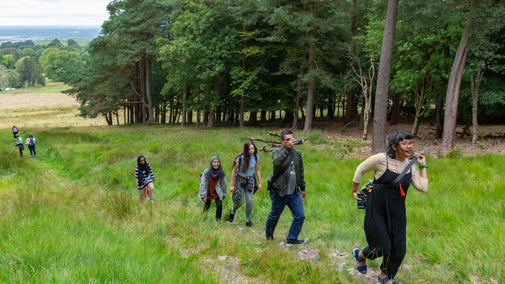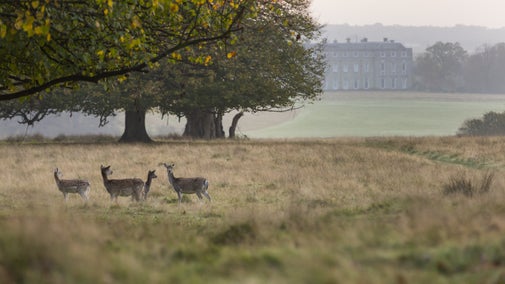Slindon medieval park pale and village walk
Sussex
This circular walk passes through Slindon's medieval deer park, following the route of its pale and through the unspoilt downland village of Slindon. There is plenty to enjoy on this trail at the Slindon Estate in West Sussex, which is the National Trust's largest traditional estate on the South Downs.
Near to
Slindon EstateStart point
Park Lane car park, grid ref: SU960077Trail information
*Easy terrain with mostly bridlepaths and a short stretch of pavement and road. For further details, please see section marked Terrain.
**Relatively well surfaced and suitable for pushchairs. For further details, please see section marked Access.
***Dogs welcome but keep under control as livestock in surrounding fields. For further details, please see section marked Facilities.
Trail diversion
The pumpkin display has now closed, so please do not take the detour at point 7 but instead continue on the main route.
More near here
Nore Hill Folly walk at Slindon
This walk around Nore Hill Folly from The George Inn at Eartham is ideal for warm days in spring, summer and autumn, with much of the route shaded by trees.

Get in touch
Our partners

We’ve partnered with Cotswold Outdoor to help everyone make the most of their time outdoors in the places we care for.
You might also be interested in
Walking
Explore some of the finest landscapes in our care on coastal paths, accessible trails, woodland walks and everything in between. Find the best places to walk near you.

Staying safe at National Trust places
The special places in National Trust care sometimes come with a few risks for visitors, be it coastline or countryside. Find out how to keep safe throughout your visits.

Follow the Countryside Code
Help to look after National Trust places by observing a few simple guidelines during your visit and following the Countryside Code.

Things to do on the Slindon Estate
Explore 3,500 acres of countryside on the Slindon Estate. From the historic village to ancient parkland and walking routes for all, there's lots to see and do.

Outdoor activities
Searching for a new outdoor activity to try? Discover the best places in our care for outdoor activities, including off-road cycle tracks, walking trails and coastlines for watersports.

Walking in Sussex
Explore coastal paths, open parkland and countryside teeming with wildlife on these top walks in Sussex.

